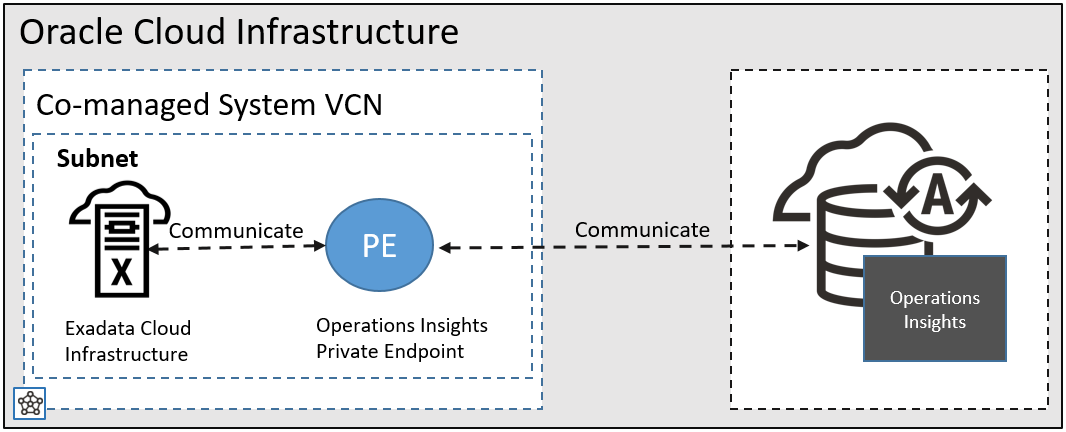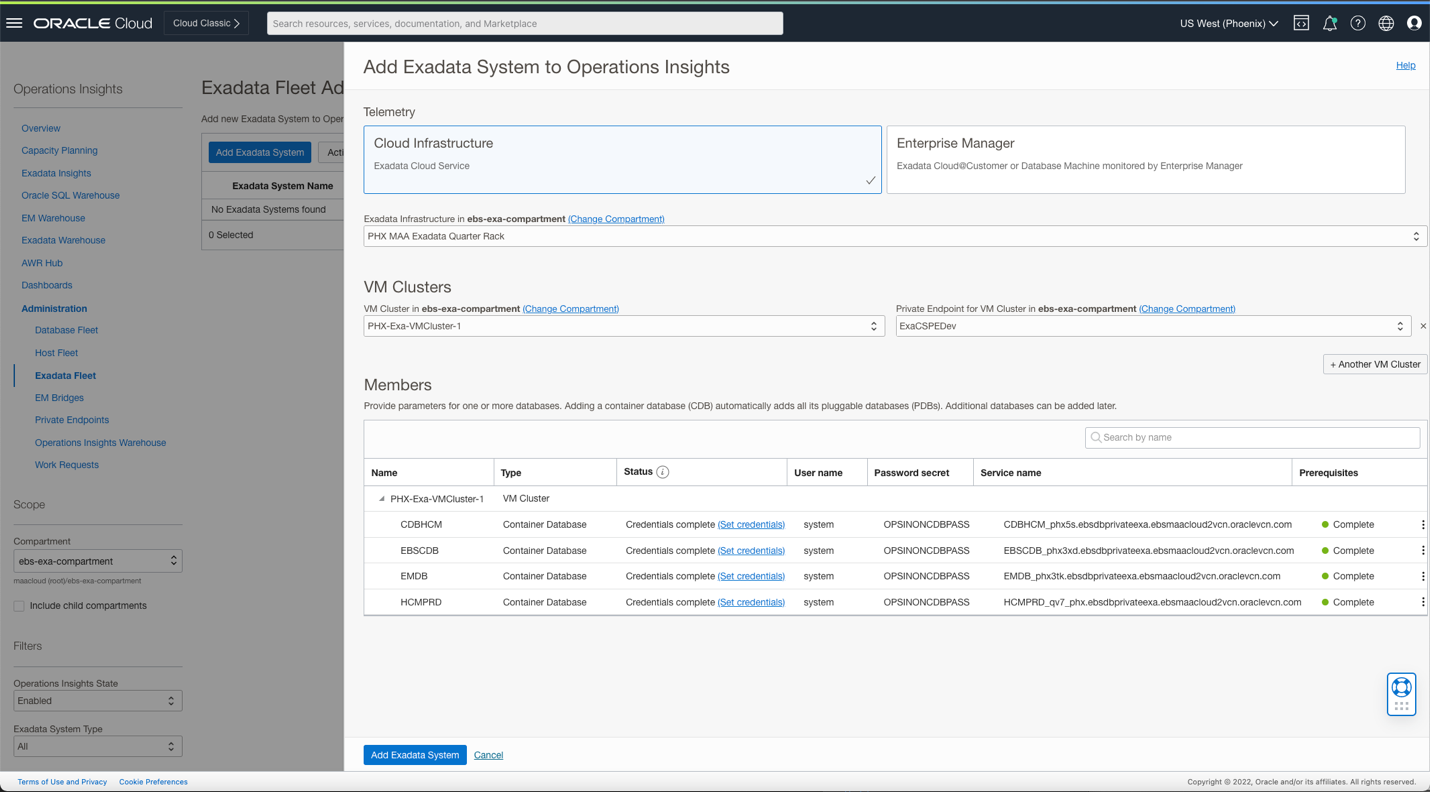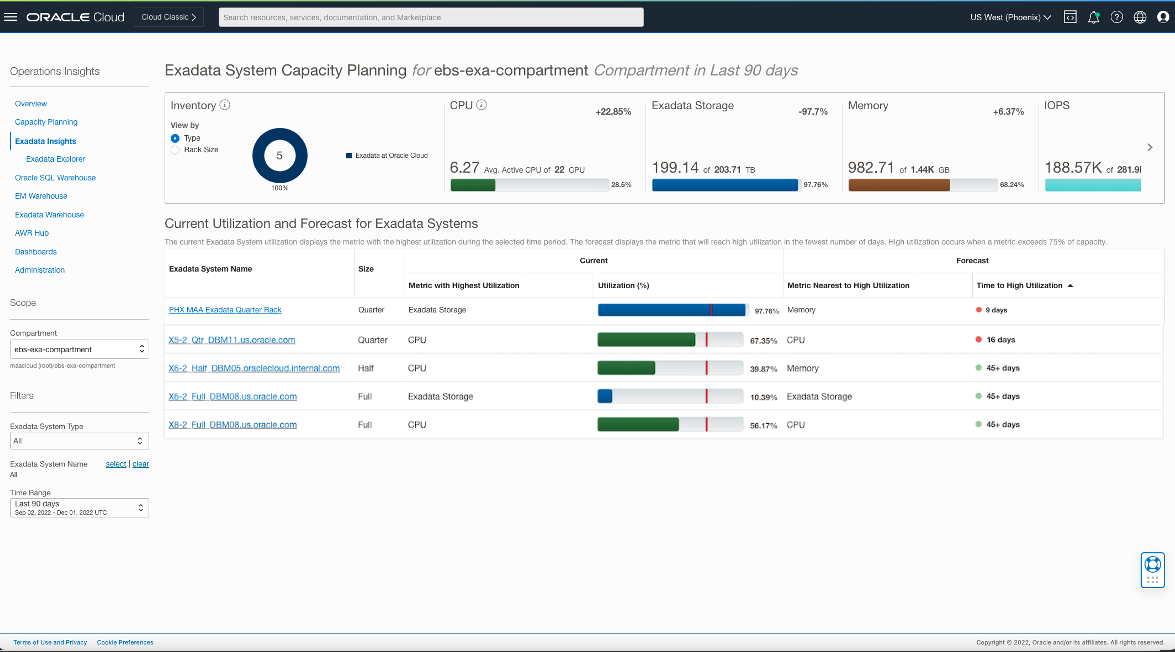Exadata Insights application within Oracle Cloud Infrastructure (OCI) Operations Insights service now has support for Oracle Exadata Database Service on Dedicated Infrastructure in the Oracle public cloud.
Exadata Insights provides a holistic view of all Exadata systems across your enterprise (on-premises and cloud) to help you optimize their capacity for your proactive planning and database consolidation use cases.
Key Exadata Insights capabilities
OCI Operations Insights enables business executives, database professionals, or those in IT Ops or DevOps roles to make informed, data-driven compute resource, and performance management decisions. Key Operations Insights Exadata Insights capabilities include:
- Ability to analyze resource usage of databases, Exadata systems, and hosts across the enterprise
- Forecast future demand for resources based on historical trends
- Compare SQL performance across databases and identify common patterns
- Identify SQL performance trends across databases enterprise-wide
- Support of Exadata on-premises and the cloud
Using the latest enhancements, you can now analyze Exadata resource utilization to identify spare capacity suitable for new workloads that can be fully managed on OCI (Oracle Database 19c and greater).

Use case: Forecasting resource requirements
Using the Capacity Planning capability for Exadata systems you can perform:
- Enterprise-wide capacity planning analysis of Exadata resource utilization
- Identify under and over-utilized Exadata resources to optimize utilization
- Find Exadata systems projected to reach the highest level of utilization
- Use machine learning based forecasting to identify total lead time to expand capacity based on long-term historical data to project future resource growth
- Ensure the Exadata system you are performing consolidation on satisfies the future needs of databases being consolidated using the forecasting and capacity planner capabilities
- Estimate Exadata usage after 12 months
Adding Exadata Systems for Operations Insights analysis
Communication between the Operations Insights service and Exadata Cloud Infrastructure uses the Private Endpoint technology. The Private Endpoint is a representation of OPSI in the VCN in which the Oracle Cloud Database can be accessed and acts as a VNIC using private IP addresses in a subnet of your choice. While the Private Endpoint does not need to be on the same subnet as the Oracle Cloud Database, it must be on a subnet that can communicate with the Oracle Cloud Database. The Private Endpoint enables the data transfer from Exadata Cloud Infrastructure and its respective databases into Operations Insights-owned Autonomous Data Warehouse and enables Operations Insights Exadata Insights and Capacity Planning capabilities.
Once a Private Endpoint has been created to communicate with the Exadata Cloud Infrastructure residing in your private Virtual Cloud Network (VCN), an Exadata system can be added to utilize that endpoint. To do that, navigate to the Administration and then Exadata Fleet menu and select the Cloud Infrastructure icon Exadata Cloud Service.

Once the Exadata system has been added and enabled in Operations Insights, it is then ready to be utilized by Exadata Insights service for resource utilization and capacity planning.

Use case: Consolidate Oracle Databases on an Exadata System
Obtain and inspect details of individual Exadata systems to review performance characteristics of all the databases, hosts, and storage servers using the following capabilities:
- Identify top databases by the resource type CPU, memory, I/O, and storage
- Find top hosts by the resource type CPU and memory
- Identify top Exadata storage servers by storage, I/O, and throughput
Determine which Exadata hosts satisfy resource requirements - Find low resource utilization servers
- Plan using performance history and seasonality
- Ensure that service levels can be met over time


In summary
Operations Insights further simplifies Exadata planning and onboarding experiences with expanded support for Oracle Exadata Database Service on Dedicated Infrastructure in the Oracle public cloud. You can obtain a comprehensive fleet-wide view of your Exadata systems irrespective of where they are running (on-premises or cloud) utilizing Oracle Enterprise Manager, or natively in OCI. Systems enabled in Exadata Insights equip you with enhanced consolidation, troubleshooting, and capacity planning capabilities. And the existing Operations Insights SQL Warehouse functionality can be used to further identify unpredictable, slow, and inefficient SQL.
Sign up for an Oracle Cloud Infrastructure trial account! For more information about this feature and how you can use it, see the documentation, and try it by signing up for Livelabs.
Resources:
